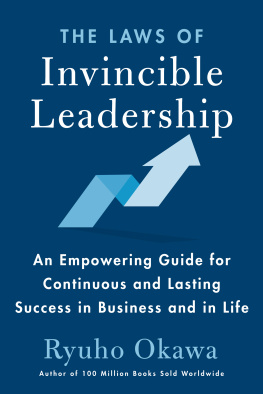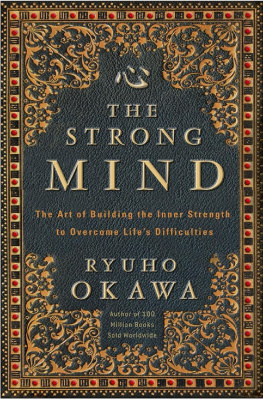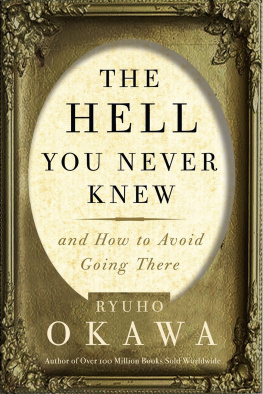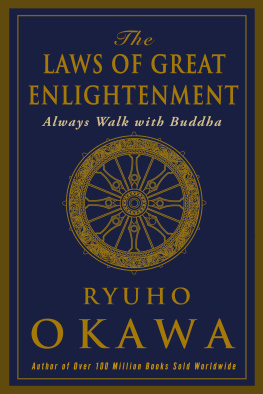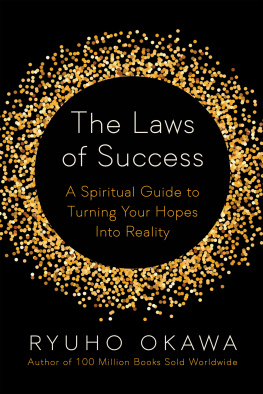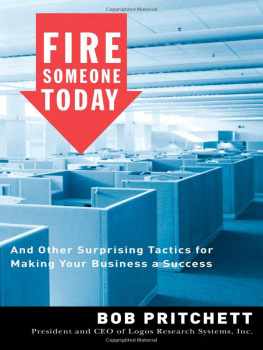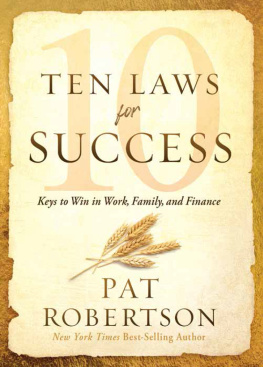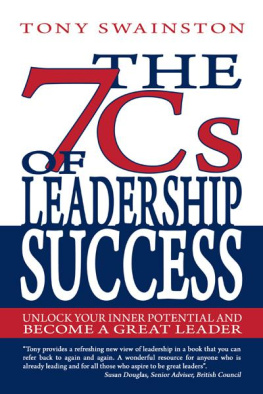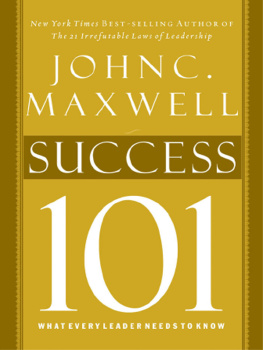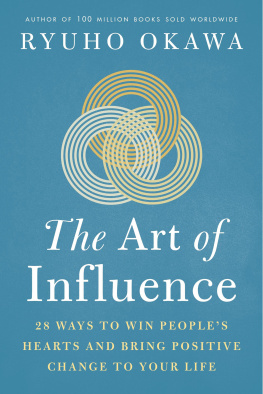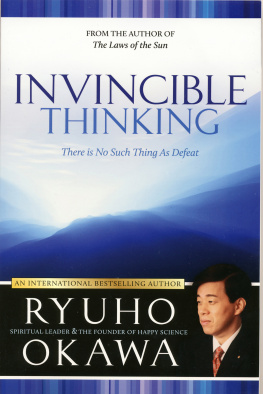THE LAWS OF INVINCIBLE LEADERSHIP
An Empowering Guide for Continuous and Lasting Success in Business and in Life
Copyright 2018 by Ryuho Okawa
English translation copyright Happy Science 2018
Originally published in Japan as
Joushou No Hou by IRH Press Co., Ltd., in January 2002.
ISBN: 978-1-942125-37-2 / 1-942125-37-2
Book Design: Jess Morphew
Cover / Interior Image Shutterstock / Lucky Team Studio
PUBLISHED BY:
IRH PRESS
New York
All rights reserved. Without limiting the rights under copyright reserved above, no part of this publication may be reproduced, stored in or introduced into a retrieval system, or transmitted, in any form, or by any means (electronic, mechanical, photocopying, recording, or otherwise) without the prior written permission of both the copyright owners and the above publisher of this book.
eab:20171031
THE LAWS OF INVINCIBLE LEADERSHIP
An Empowering Guide for Continuous and Lasting Success in Business and in Life
Ryuho Okawa
Founder of Happy Science
IRH Press
~ T W O ~
Develop a Life Strategy and a Set of Tactics
Understanding the Difference Between a Strategy and Tactics
The second secret to becoming an effective leader is to outline a strategic plan for your life and then devise a set of methods for fulfilling it. A strategy, in general, is the broad aims and goals we want to accomplish in the future. So a life strategy is a master plan that serves as our essential guide through our lives. The methods or tactics, on the other hand, are shorter-term ideas that determine specifically what needs to be done and how to fulfill our strategy. To help distinguish between them, you might think of your strategy as the conceptual element of your plan and the tactics as the tangible elements that you can see happening as you are carrying them out.
Finding the distinction between a strategy and tactics may be hard to do, and this, in fact, is often the reason why highly talented people find themselves not succeeding. They usually confuse the methods with the strategy. They mistakenly prioritize working on the specific techniques and tactics in front of them over working strategically toward winning the long-range victory. An incisive aptitude allows them to pay close attention to technicalities and details, but this often leads to focusing on smaller issues and neglecting to keep their sights firmly set on the bigger picture. Their thinking pattern resembles technical experts or those who work in very specialized jobs.
This trait could make it difficult for them to succeed when they work in positions above others. But working with a boss who can put their skills to good use may allow them to find the path to their success.
So the ability to tell the strategy apart from the methods is essential to success, and this ability can be cultivated through effort. To better understand the distinction between developing a strategy and devising the methods, lets consider a basic example of a girl in elementary school who wants to grow up to be a doctor.
If she is to achieve her dream of becoming a medical professional, going to medical school will be an essential strategic goal. So as part of her strategy, she will need to determine her principal choice of university and set earning admission to that university as her primary goal. To decide which university she wants to attend, she will need to begin by looking at a range of undergraduate universities offering degrees in premedical education or other qualifying majors and determining the ones that best suit her or her parents financial capacity.
If she or her parents are able to afford a higher rate of tuition, she can include many private institutions in her list of options. But if this is difficult to do, her choices will mainly come from state universities and community colleges that offer premed courses.
If a state university works best for her and her parents, then the final deciding factor will be based mostly on where she currently lives. And, after she has narrowed down her choices of universities in this way, she will move on to the next step of looking into which middle schools and high schools will best prepare her to gain admission into the university she has chosen.
In addition to determining the educational qualifications, another essential aspect of outlining a successful strategy will be to make sure that a career in medicine really suits her as a person. For example, the ability to do well in school is not the most reliable indicator of whether someone is compatible with a medical profession. Sometimes, students who decide on pursuing a medical career based solely on scholastic achievement find that they are unable to handle their first autopsy at medical school and pass out during the middle of the operation.
Another aspect of career compatibility is that doctors spend all day with patients. So finding a sense of fulfillment through constant contact with people is another quality she should think of as essential to this career. If she feels uncomfortable about being around and interacting with people all the time, she may want to reconsider her choice of career.
As my description so far indicates, gaining an understanding of and assessing her compatibility with the day-to-day aspects of her dream profession are key to devising a career strategy. Her strategy will need to be based on this assessment of her aptitude for becoming a doctor.
If she determines that she still wants to become a doctor, she is now better prepared to devise a successful strategy. So if we return to her educational strategy that I began discussing earlier, she will need to outline a plan that will successfully get her into medical school. This can be done by backtracking from her main choice of university to determine which high school and middle school will increase her chances of being admitted to each level of school above it. Some high schools offer curriculums designed for students pursuing premed programs in college, and these schools may be essential to her chosen university. Then, she could look into which middle school shell need to attend in order to be accepted by her chosen high school.
In addition to this, she should determine her main academic goals for her grade school education. For example, she will need to focus a large part of her studies on performing well in math and science. As she outlines her general goals leading up to her dream career in this way, her overall life strategy will start taking shape.
The next step she will want to take is to determine her methods or tactics. Her methods are the detailed action plans that she will choose and alter as the need arises to increase her chances of success. This is what differentiates the methods from the strategy.
For example, how well she needs to do on her next exam and what her method of preparation will be, how shell go about improving in her weak subjects, and how much improvement she needs to make in her strong subjects are all decisions about tactics. Hiring a tutor, for instance, is an example of a tactic she can consider.
In conclusion, the strategy is the plan that helps you attain the long-range purpose, and the methods are the specific tactics and techniques you will implement to help you successfully reach your goals.
Develop a Strategy for Your Career
Practicing strategic thinking may seem as if you are just planning for a vague, intangible dream in the distant future. But this dream is certain to unfold into reality as time passes. Strategic planning is as essential to our own success in life as it is for the girl in this example. So we also need to spend time planning the course we would like our lives to follow and determine what we should be doing now to fulfill them.
Next page
